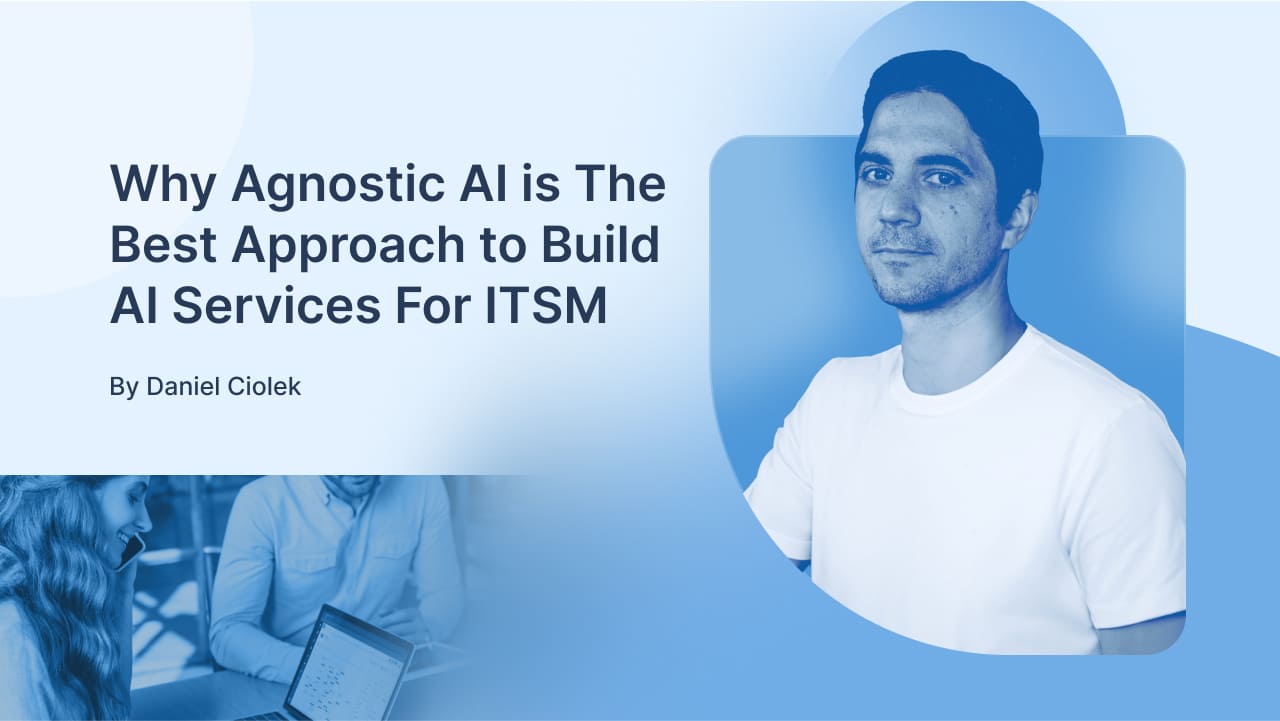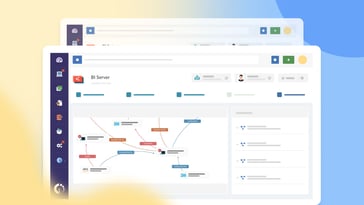*This article was originally published in Unite AI.
OpenAI's groundbreaking AI tool ChatGPT was officially launched on November 30th, 2022. However, it wasn't until the early months of 2023 that its impact truly began to ripple through the global consciousness. This transition from a novel technological release to a sensation that captivated the world was both rapid and remarkable.
The metrics speak volumes: According to Similarweb, ChatGPT garnered around 266 million visits in December 2022. Yet, by February 2023, this number had surged 1 billion, showing the swift and wide-reaching embrace of this phenomenon.
We are about a year away from the global reckoning of how artificial intelligence can reshape industry landscapes. In this time, a curious paradox has surfaced. It's a paradox where the rapid pace of technological advancement coexists with an unforeseen deceleration in innovation and strategic planning within businesses.
Reflecting on the past year, we see the critical importance of understanding and adeptly navigating this paradox to successfully chart a course in the ever-evolving world of IT.

The initial surge
The arrival of ChatGPT marked not just the beginning of a new technological era, but also ignited a frenzy of excitement across various sectors. This fervor was more than just interest; it was a rush, a surge driven by a potent combination of fear of missing out (FOMO) and the allure of untapped potential. Like many of my peers, I was captivated by the transformative possibilities, and started thinking about AI's place in Service Management.
It's important to understand: ChatGPT wasn't merely another tool in the arsenal of technology; it symbolized a new frontier in AI, one that promised to redefine the norms of customer interaction, streamline software development processes, and overhaul traditional business operations.
This period was characterized by an intense enthusiasm, a collective rush to not just explore but to invest in and harness the burgeoning capabilities of AI.
Hesitation and caution
In the ensuing months, however, as the initial dust settled and ChatGPT began integrating into our everyday business fabric, a contrasting trend emerged. This trend was less about the eager embrace and more about a cautious, contemplative pause. In realms where decisions have far-reaching implications – such as enterprise software development and IT leadership – a “wait and see” approach became increasingly prevalent.
This shift in attitude stemmed from a nuanced understanding of the stakes involved. The hesitation wasn't rooted in a lack of interest or skepticism about the potential of AI; rather, it originated from a pragmatic fear of making the wrong strategic move in a rapidly evolving landscape.
In an environment where each decision could have significant repercussions on operational efficiency, customer relations, and market competitiveness, this caution is both understandable and rational. In essence, innovation has slowed down innovation.
This reluctance to leap headfirst into full-scale AI adoption has had a tangible impact. In some sectors, particularly those heavily reliant on legacy systems and established protocols, the pace of innovation has perceptibly slowed. The irony here is stark: the very technology that promises to accelerate progress has, in some instances, placed a momentary brake on it.
Businesses, especially large corporations with complex hierarchies and ingrained processes, find themselves in a delicate balancing act. They must weigh the benefits of early adoption against the risks of untested changes to their established systems.
This puts into perspective the role of leadership in navigating technological change. It's not merely about adopting the latest technology; it's about discerning when and how to integrate new tools like ChatGPT in a way that aligns with the organization's broader objectives and risk appetite. This insight is vital in an industry where staying ahead of the curve is as much about strategic foresight as it is about technological proficiency.

Navigating the paradox
This paradox – the simultaneous acceleration and deceleration of innovation – is not just a market trend. It's a reflection of our collective response to groundbreaking and disruptive technologies.
The duality in our response is deeply rooted in human nature: an instinctive drive to embrace advancement coupled with a cautious reluctance towards the unfamiliar. In the realm of IT, where the pace of change is relentless and the stakes are high, this paradox is especially pronounced. IT leaders find themselves at the helm, navigating these complex and often uncharted waters.
Understanding this paradox is crucial. It's not merely about the introduction of new technologies; it's about the underlying human responses to these changes. On one hand, there's an eagerness to harness the latest advancements to stay competitive and innovative. On the other, there's a palpable apprehension about the disruptions these new technologies might bring – concerns about integration challenges, impacts on existing workflows, and the long-term implications for the business.
The key to thriving in this paradoxical landscape is adaptive leadership. In the context of IT and technological innovation, adaptive leadership entails a nuanced approach. It's about having the foresight to distinguish genuine opportunities for meaningful innovation from transient technological trends.
This form of leadership calls for a balanced perspective: one that combines a healthy enthusiasm for emerging technologies with a pragmatic, grounded assessment of their real-world applications and implications.
For leaders in the IT sector and beyond, cultivating adaptability is essential. This involves developing the agility to pivot and adapt strategies in response to technological shifts, while maintaining a steadfast focus on long-term organizational goals. It means not merely jumping on the bandwagon of every new technological trend, but thoughtfully integrating advancements in ways that genuinely enhance business processes, improve efficiency, and align with the broader strategic vision of the organization.

Adaptive leadership in this context also means fostering a culture of continual learning and flexibility within teams. Encouraging a mindset where experimentation and innovation are balanced with Risk Management and strategic planning. Leaders must champion initiatives that leverage new technologies for tangible business benefits while also being prepared to recalibrate their approach as the technological landscape evolves.
This isn't about choosing between innovation and caution, as if they're opposing concepts (they're not). Rather, it's about harmoniously blending these two instincts. It's about steering the organization through a balanced path of embracing new technologies while thoughtfully considering their long-term impact. This balanced approach is what will define successful leadership in an era marked by rapid and often unpredictable technological change.
The way forward
In this new era, the path to success is paved not with fear or uncritical acceptance, but with strategic adaptability. This approach demands we judiciously harness these advancements to foster improved efficiency, enhanced customer experiences, and a sharper competitive edge.
However, this approach also demands an awareness of the pitfalls that accompany hasty or ill-considered technology adoption – the risks of disrupting established systems without a clear strategy, or investing in technologies that may not align with long-term business goals.
In reflecting upon the past year – a year that has been as much about the exhilaration of AI possibilities as it has been about the sobering realities of integrating these technologies into complex business environments – one truth stands out. The hallmark of successful leadership in the age of AI is not gauged by the speed at which new technologies are adopted, but by the strategic foresight with which they are woven into the fabric of business models.
As we navigate the paradox of innovation acceleration and stagnation, our focus should not be on resisting this duality, but on embracing it as a dynamic aspect of modern business. It is within this paradox that opportunities for thoughtful, sustainable growth lie. By understanding and adeptly maneuvering through these contrasting forces, we position ourselves not just to survive, but to thrive – to transform potential challenges into avenues for enduring success.
As we stand at the crossroads of a rapidly evolving technological landscape, it's important to remember: the future belongs to those who can find harmony between the allure of the new and the wisdom of the measured. In this balance, we will discover not just the key to sustainable growth and innovation, but also to forging a legacy that withstands the test of time in an industry that never rests.















